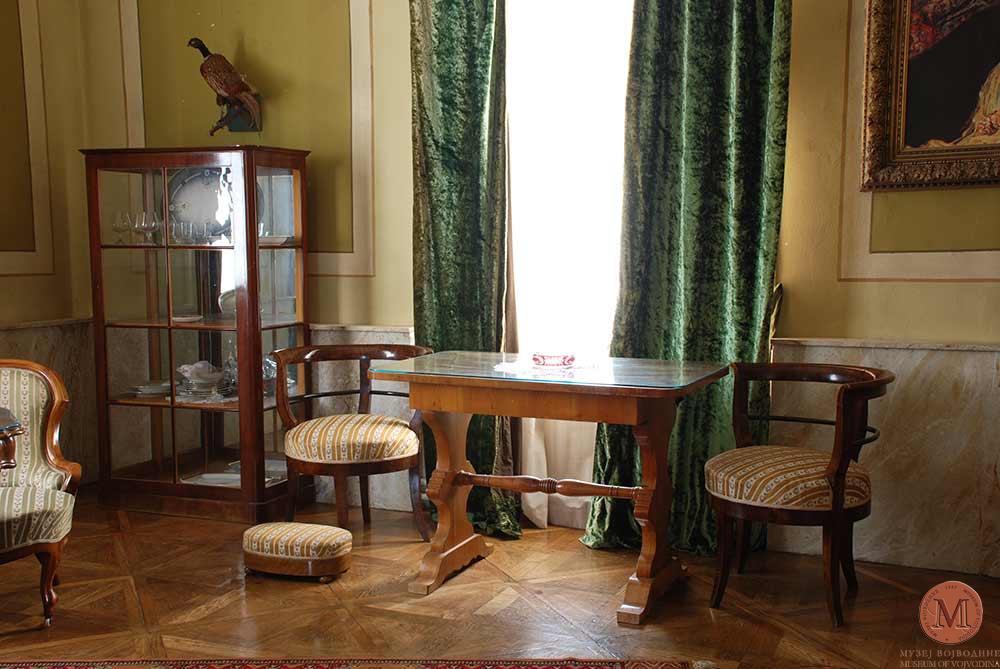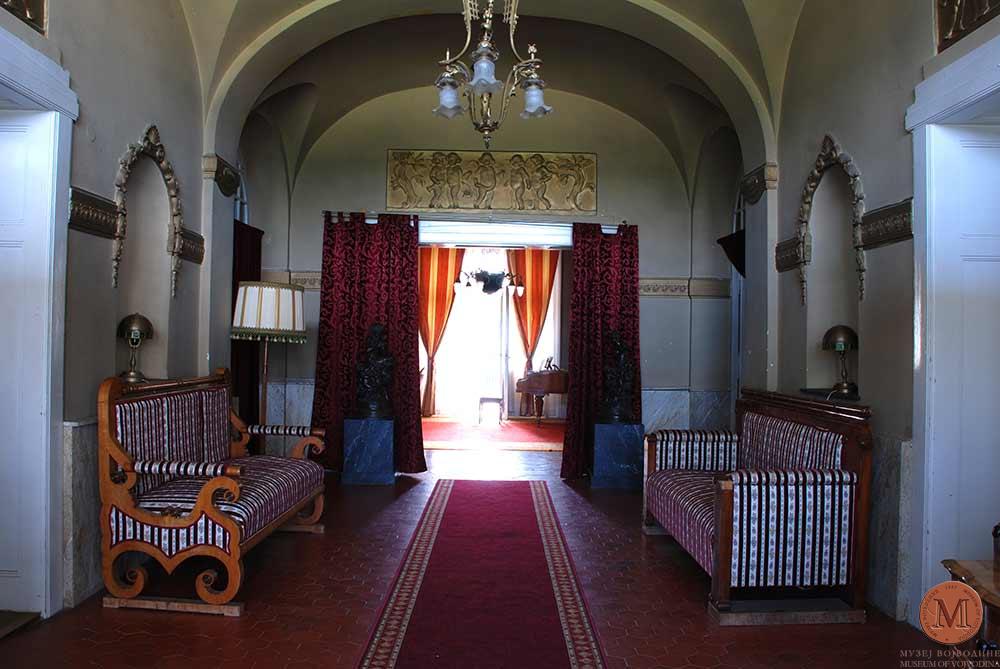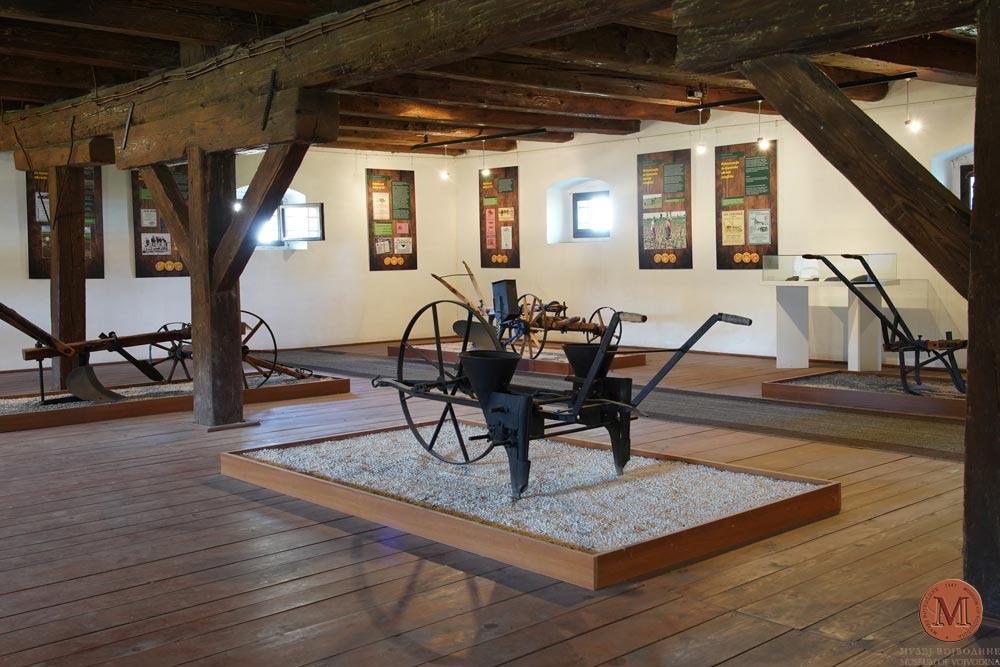The exhibition of period furniture
The exhibition of period furniture was diplayed in the Big Mansion, which is incorporated into the Museum Complex in Kulpin. The author of the exhibition is Jelena Dobrović, curator – academic graphic artist.
The collection of period furniture in the Museum of Vojvodina has been systematically accumulated, ever since 1955. Soon after in 1961, the first furniture exhibition was displayed in the Museum. In 1967, the Museum earned the right to dispose and use the manor in Čelarevo with its complete furniture, so the collection became remarkably enriched, therefore an appropriate space should have been obtained for the exhibition. In late 2009, this collection was transferred to the mansion in Kulpin, and displayed there. This exhibition contains items covering the period from the early 18th to the first half of the 20th century.
There are very few objects belonging to applied art created before 1700, due to historical circumstances and continuing wars against the Ottomans. By the mid eighteenth century, after the wars ended and when urban settlements appeared, various trades had been thriving rapidly. A strong support to the thriving art, particularly of art crafts, was the flourishing economy from the seventeenth to the end of the eighteenth century, after a series of colonization.
The exhibition on period furniture with other exhibits of applied arts includes several segments, illustrated by objects most commonly used in this region. These items were manufactured prevailingly in artisans’ workshops. The typical pieces of furniture that reflect the distinctive stylistic features of particular artistic trends are those belonging to domestic furniture: cabinets, secretaires, chests, vitrines, canabes, armchairs, chairs, pianos, clocks, glassware, bronze sculptures, etc. The exhibition displays the style and artistic trends of the Baroque, Bidermeier, a copy of Louis XV, Second rococo (first and second phase), second Empire, then Neo-Bidermeier and Pseudo-rococo. Such pieces of furniture usually embellished interiors of burgoisie homes, but sometimes they were used in wealthy rural houses as well.
The Exhibition on the development of the dominant branch of agriculture in Vojvodina

The early exhibitions on the history of agriculture were displayed in the former wheat storehouse (Pavilion 1). The refurbishment of the premises for housing permanent exhibits started immediately after the foundation of the Museum. In the course of the nineties, several thematic exhibitions were organized on three levels. By their contents, conception and scientific aspect, they make up a unique entity showing how the dominant agricultural branches were developing in this part of the world.
The authors of the exhibitions were experts coming from Novi Sad Faculty of Agriculture, Institute of Crop and Vegetable Growing, as well as the Museum of Vojvodina.
The Exhibition of Agricultural Machinery and Tools

Author of the exhibition: Filip Forkapić, curator, ethnologist
Pavilion 2 is an auxiliary facility, typical for large estates in Vojvodina, dating from the eighteenth and nineteenth centuries. In the past, this building served as a horse stable, a blacksmith’s shop, a workshop and also as a carriage shed. It is unknown whether its purpose has been changing through history or not, or when it was exactly built, but it is certain that at the time when the Dundjerski family was managing the estate, the building did wear the present shape and did have the above mentioned functions. Several original items have been preserved from that period, which are now displayed at the permanent exhibition: a forge with blacksmith’s bellows and lathe.
The building was refurbished in 1993, for the Exhibition of Agricultural Machinery and Tools, immediately after the Museum had moved in. The attic contains a depot, whereas the ground floor is arranged for displaying the permanent exhibition.
The display was rearranged and small construction repair works were carried out at the end of 2009 and at the beginning of 2010.
Thanks to the rapid scientific and technical development, remarkable changes have been achieved as far as agricultural tools and machinery are concerned.
In the Pavilion, tools and machines of diverse technical characteristics, made by various producers are on display. Most of the displayed items date from the period between the two world wars, but some originate from the end of the nineteenth and beginning of the twentieth century, as well as from the period after WW II. The following groups of agricultural machines are on display:
- Tools for basic and additional land cultivation (ploughs, covering tools, lining tools, cylinder, harrow);
- Seed drills (for stubble wheat and hoed crops, the so called „secer“);
- Machines for seed cleaning and sampling (winnower, spiral and cylinder shaped sampling device);
- Tools and machines for feed mixing (huskers and corn ermers, choppers, hammer mill and cutter blades for hay and straw);
- Tools and machines for harvesting and picking ( harvesting machine for potatoe, fork for sugar beet harvesting, hay rake and grain ear rake used in stubble fields);
- Machinery (steam locomobiles and tractors);
- Transportation vehicles (horse driven cart).
These exhibits were mostly made in blacksmith’s or cart shops, whereas fewer of them were made in factories. They were produced in Europe (Germany, Hungary, the Czeck Republic, England, Serbia and Croatia) or in the USA.















